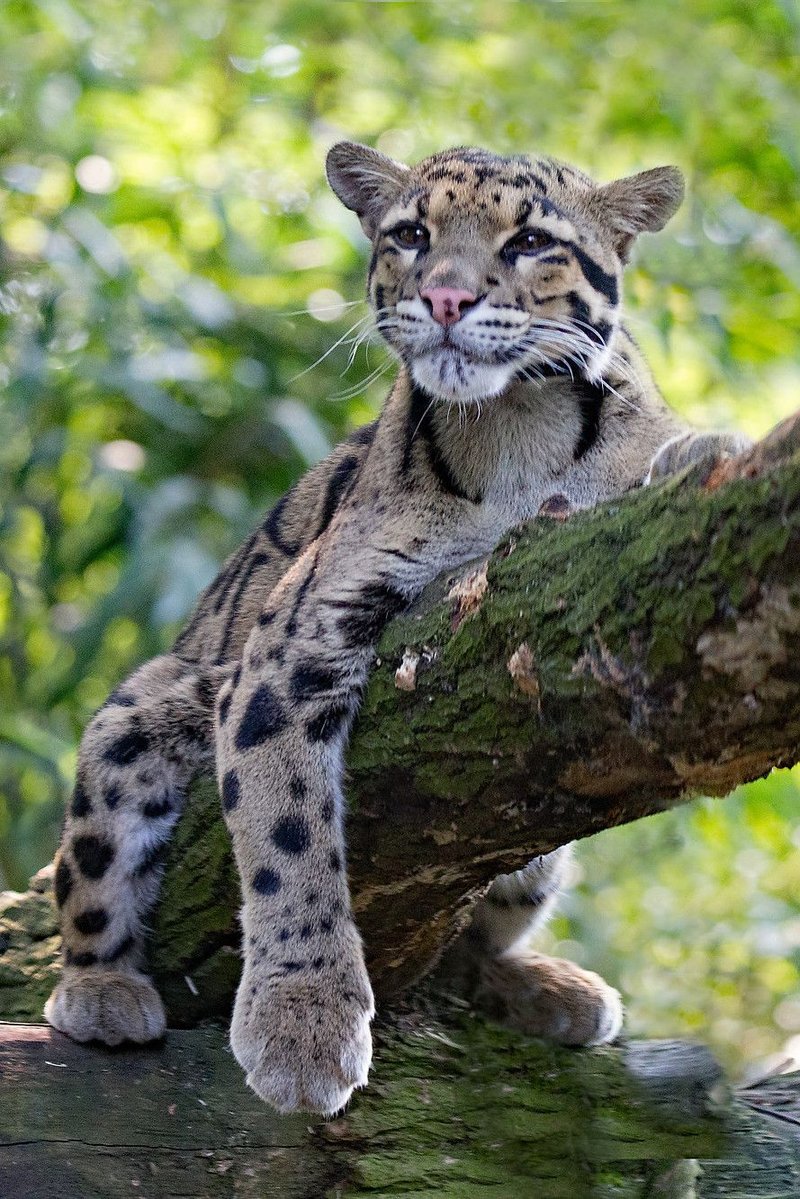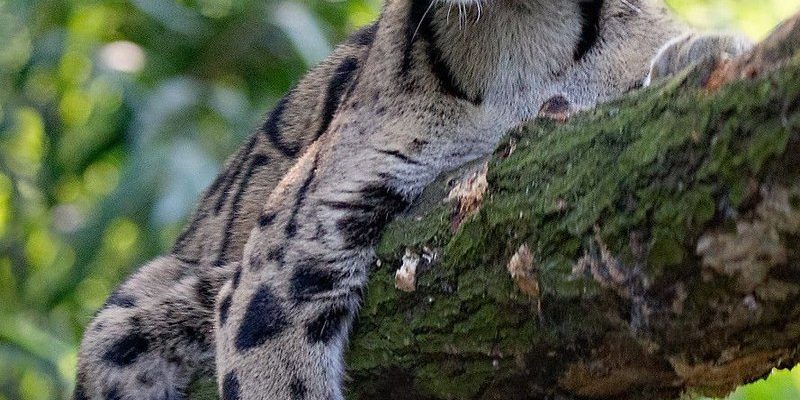
The clouded leopard, known scientifically as *Neofelis nebulosa*, is not just another big cat; it’s a living reminder of evolutionary twists that occurred long before us. Think of it like a time traveler, carrying characteristics from both its ancient past and adaptations made for today’s world. So, grab a cup of coffee, sit back, and let’s explore the remarkable journey of the clouded leopard through the ages.
What Sets the Clouded Leopard Apart?
The clouded leopard is often overshadowed by its more famous relatives, but it has some distinct features that make it truly special. First off, its cloud-like spots give it a stylish, almost mystical appearance that helps it blend seamlessly into the dense forests of Southeast Asia. This camouflage is crucial for an animal that relies on stealth to hunt small prey.
Despite its name, the clouded leopard is not a true leopard. Here’s the thing: it’s part of a different genus, *Neofelis*, which also includes the *Sunda clouded leopard*. This distinction highlights the clouded leopard’s unique evolutionary path. While it shares some traits with larger cats, its size is somewhat smaller, and it has a more flexible body that allows for agile climbing—almost like a cat that has taken the tree branches as its home!
These adaptations aren’t just for show. Having evolved in the rainforests, clouded leopards have developed long, sharp claws and extremely flexible ankle joints that allow them to climb, hang, and prowl in the trees. This skill helps them escape larger predators and stalk their prey more effectively.
The Origins of the Clouded Leopard
To understand the evolutionary history of the clouded leopard, we need to go way back to its ancestors. Scientists believe that the clouded leopard diverged from other big cats around 6 to 10 million years ago. This makes them one of the oldest lineages of large felines alive today. Isn’t it wild to think about how long they’ve been roaming the earth?
Their journey began in Southeast Asia, where the environment shaped their evolution. Over time, they adapted to various habitats, from tropical rainforests to mountainous areas. You might wonder why this is important. Well, the diversity of habitats led to differing adaptations, ensuring their survival amidst changing climates and ecosystems.
Interestingly, genetic studies reveal that the clouded leopard is more closely related to the snow leopard than the true leopards, despite their name. This unexpected connection suggests that evolutionary pressures in the forests and mountains led to fascinating adaptations that we see today.
Adaptations for Survival
The clouded leopard is a prime example of how evolution shapes animals to thrive in their environments. Let’s talk about some of the key adaptations that have allowed it to flourish in the wild.
- Camouflage: As mentioned, their cloud-like patterns help them blend into the dappled light of the forest.
- Climbing Skills: Their strong limbs and retractable claws make them excellent climbers, allowing them to hunt in trees.
- Diet: They primarily hunt small mammals, birds, and even larger prey like deer. This diverse diet helps them adapt to changing food availability in their habitat.
One particularly interesting aspect is their solitary behavior. Clouded leopards are typically shy and prefer to roam alone, which reduces competition for resources. This trait is thought to have developed from their need to hunt stealthily in thick vegetation, making them masters of their own territory.
Additionally, their ability to adapt their hunting strategies is a testament to their evolutionary history. They can alternate between stalking their prey and ambushing it from above, using their climbing prowess to gain the upper hand.
Threats and Conservation Challenges
Despite their incredible adaptations, clouded leopards face numerous threats today. Deforestation is a significant challenge, as their forest homes are cut down for agriculture and development. This loss of habitat not only reduces their hunting grounds but also isolates populations, making it harder for them to breed.
Another concern is poaching. These beautiful cats are often hunted for their exquisite fur and bones, used in traditional medicine. Honestly, it’s heartbreaking to think that they face such dangers because of human activities.
Conservation efforts are underway to protect clouded leopards and their habitats. Organizations are working to establish protected areas and educate local communities about the importance of conserving this unique species. You might be wondering how you can help. Supporting wildlife protection initiatives or visiting sanctuaries that aim to rehabilitate these cats can make a difference!
Unique Genetic Traits
Clouded leopards possess some fascinating genetic traits that contribute to their adaptability. For starters, they have a unique reproductive strategy. Unlike many cats that have set mating seasons, clouded leopards can breed throughout the year, which increases the chances of population stability as environmental conditions change.
Moreover, they exhibit sexual dimorphism, meaning males and females have different physical traits. Males are generally larger and heavier than females, which is relatively common in many animal species. This size difference can influence their roles in hunting and territory defense.
Recent studies are also uncovering more about their genetic makeup, revealing traits that allow them to thrive in diverse environments. Understanding these genetic traits not only helps conservationists but also provides insight into the evolutionary processes that have shaped such a resilient species.
The Clouded Leopard’s Future
So, what does the future hold for the clouded leopard? The next few decades are crucial in determining whether this striking species can survive the rapid changes brought by human activity. Conservationists are focusing on habitat protection, anti-poaching measures, and community involvement as key strategies.
Additionally, advancements in technology, like wildlife tracking and genetic studies, are helping us understand more about their populations and movement patterns. These insights are crucial for effective conservation strategies, ensuring that clouded leopards can roam freely in their natural habitats.
The truth is, the story of the clouded leopard is a reminder of how interconnected our actions are with the survival of wildlife. By taking steps to protect their environment, we not only help them but also preserve the biological diversity that enriches our planet.
In conclusion, the evolutionary history of the clouded leopard is a captivating saga of adaptation and survival. From their unique physical traits to their intriguing behaviors, these cats are more than just beautiful creatures of the jungle; they are a testament to the wonders of evolution. Let’s continue to learn about and support efforts to protect them today and for generations to come.

